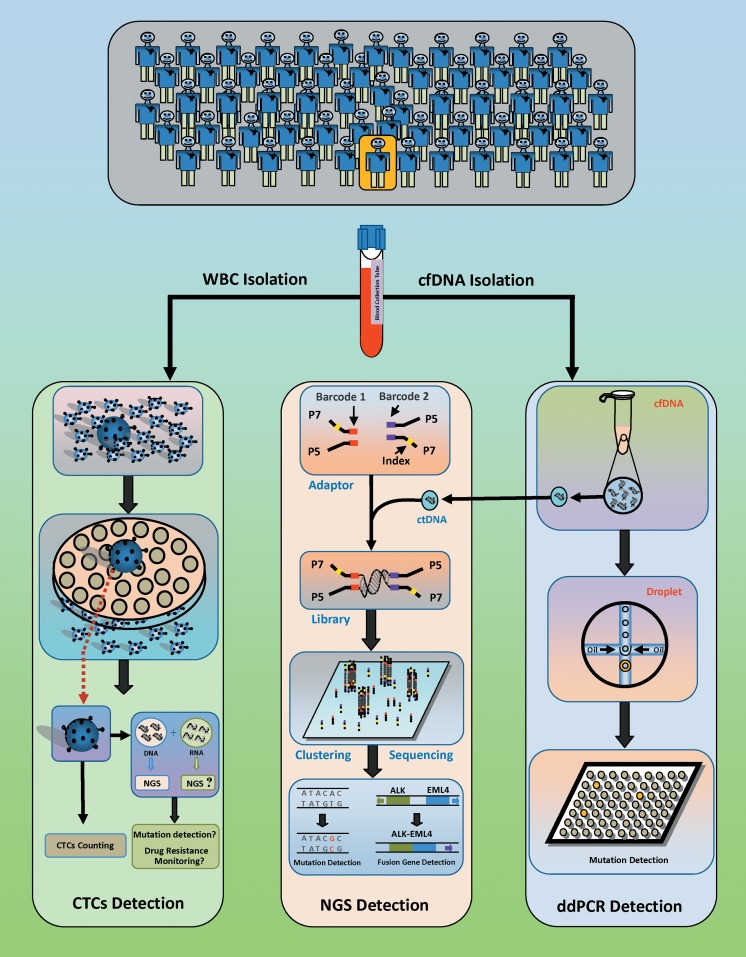Figure 3.
Circulating tumor cell detection and ctDNA detection used for lung cancer diagnosis. Circulating tumor cell capture is performed to isolate cells with large sizes. The number of CTCs is used as a reference for predicting the prognosis and survival time of patients with lung cancer. Circulating tumor DNA (ctDNA) is isolated from the blood of patients with lung cancer. Digital PCR (ddPCR) detection, a fluorescent probe-based PCR assay, is partitioned into highly uniform 1-nL reverse micelles (water-in-oil). After PCR amplification, the fluorescence of each droplet is individually measured and defined as positive (presence of PCR product) or negative (absence of PCR product). For NGS detection, a pair of index-based adaptors are ligated at the ends of the cfDNA fragment. During high-throughput sequencing, adaptor-ligated DNA fragments undergo amplification, clustering, and sequencing. Data are used for analysis of ctDNA point mutations, copy number variations, and chromosomal rearrangements. NGS indicates next-generation sequencing; PCR, polymerase chain reaction.

